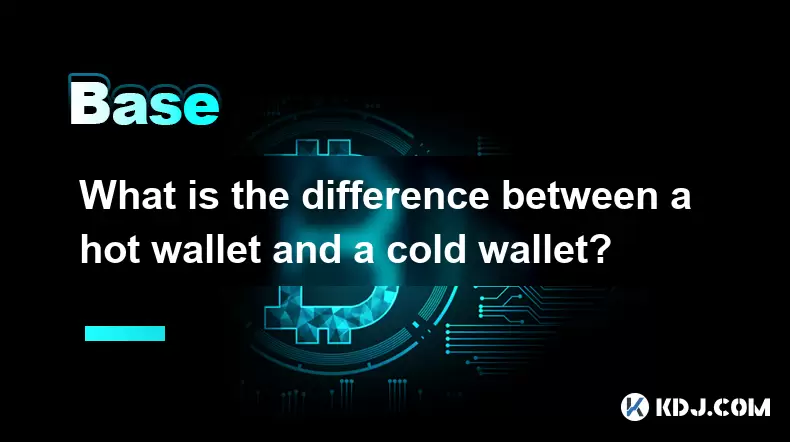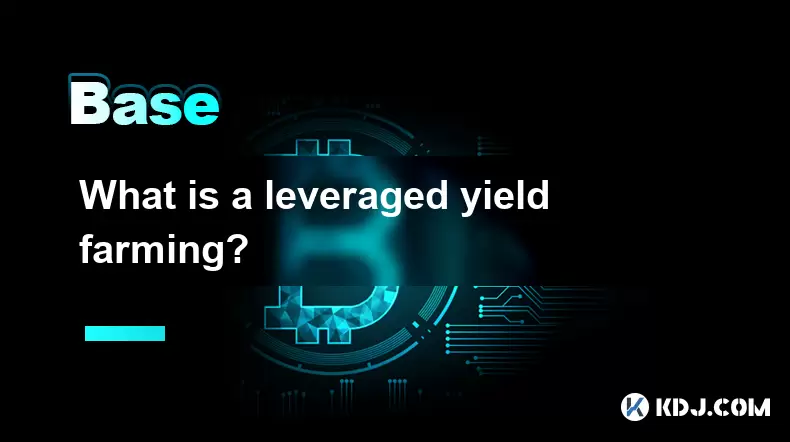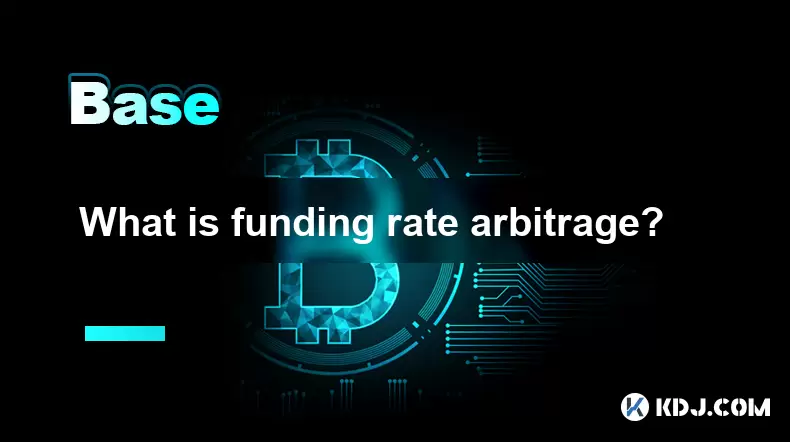-
 Bitcoin
Bitcoin $108,043.3894
-1.71% -
 Ethereum
Ethereum $2,519.1878
-3.09% -
 Tether USDt
Tether USDt $1.0004
-0.01% -
 XRP
XRP $2.2231
-2.72% -
 BNB
BNB $655.3607
-1.06% -
 Solana
Solana $148.3620
-2.84% -
 USDC
USDC $1.0000
0.00% -
 TRON
TRON $0.2838
-0.37% -
 Dogecoin
Dogecoin $0.1648
-4.79% -
 Cardano
Cardano $0.5759
-3.97% -
 Hyperliquid
Hyperliquid $38.4598
-5.19% -
 Sui
Sui $2.9005
-4.22% -
 Bitcoin Cash
Bitcoin Cash $481.1531
-3.80% -
 Chainlink
Chainlink $13.1936
-4.50% -
 UNUS SED LEO
UNUS SED LEO $9.0471
0.41% -
 Avalanche
Avalanche $17.9444
-4.20% -
 Stellar
Stellar $0.2378
-2.60% -
 Toncoin
Toncoin $2.7850
-3.38% -
 Shiba Inu
Shiba Inu $0.0...01148
-3.75% -
 Litecoin
Litecoin $87.3159
-3.73% -
 Hedera
Hedera $0.1557
-3.02% -
 Monero
Monero $314.0980
-1.98% -
 Polkadot
Polkadot $3.3909
-5.10% -
 Dai
Dai $1.0001
0.00% -
 Ethena USDe
Ethena USDe $1.0002
-0.02% -
 Bitget Token
Bitget Token $4.4147
-3.74% -
 Uniswap
Uniswap $6.9933
-9.59% -
 Pepe
Pepe $0.0...09661
-6.72% -
 Aave
Aave $264.1417
-6.16% -
 Pi
Pi $0.4705
-5.23%
What is the difference between a hot wallet and a cold wallet?
Digital wallets, like hot and cold wallets, offer varying levels of security and convenience for managing cryptocurrencies based on user needs.
Jul 04, 2025 at 11:01 am

Understanding the Core Concept of Digital Wallets
In the cryptocurrency ecosystem, a digital wallet is an essential tool for managing your assets. Digital wallets come in two primary forms: hot wallets and cold wallets. Each serves the same fundamental purpose — storing, sending, and receiving cryptocurrencies — but they differ significantly in how they accomplish this. The distinction between them lies primarily in their connectivity to the internet, which directly affects their security level and convenience of use.
Hot Wallets: Accessibility Meets Risk
A hot wallet refers to any cryptocurrency wallet that is connected to the internet. These wallets are typically software-based and include options such as web wallets, mobile apps, and desktop wallets. Because they remain online, they allow for fast transactions and easy access to funds. However, this constant connectivity also makes them more vulnerable to hacking attempts and unauthorized access.
Examples of hot wallets include platforms like MetaMask, Trust Wallet, and exchange-based wallets such as those provided by Binance or Coinbase. These services often offer user-friendly interfaces, making them ideal for beginners or users who frequently trade small amounts of crypto.
Cold Wallets: Security Through Isolation
Conversely, a cold wallet is any wallet that stores cryptocurrency offline. This type of wallet is not connected to the internet during storage, which drastically reduces the risk of cyber attacks. Cold wallets are generally considered the safest way to store large quantities of cryptocurrency over long periods.
The most common types of cold wallets are hardware wallets and paper wallets. Hardware wallets, such as Ledger Nano S or Trezor, resemble USB drives and require physical interaction to authorize transactions. Paper wallets involve printing out a public address and private key on paper, which must then be stored securely. While secure, paper wallets can be easily damaged or lost, so careful handling is required.
Comparing Security Features Between Hot and Cold Wallets
When evaluating security features, it's clear that cold wallets have a significant advantage over hot wallets. Since hot wallets are online, they are susceptible to various attack vectors including phishing, malware, and server breaches. In contrast, cold wallets eliminate these risks by keeping private keys entirely offline.
However, even with superior security, cold wallets are not immune to all threats. For example, if a hardware wallet is physically stolen and the recovery phrase is compromised, the funds can still be accessed. Similarly, if a paper wallet is exposed or duplicated, anyone with the information can take control of the associated funds. Therefore, physical security measures are just as crucial when using cold wallets.
User Experience and Practical Use Cases
From a usability standpoint, hot wallets offer greater convenience. They enable quick transfers and real-time interactions with decentralized applications (dApps) or exchanges. Traders who engage in frequent transactions often prefer hot wallets due to their ease of use and integration with various platforms.
On the other hand, cold wallets demand more effort to execute transactions, as they require connecting the device to a computer or manually entering data. This added friction is intentional, as it discourages impulsive trading and protects against accidental or malicious transfers. Long-term investors or individuals holding substantial crypto balances usually opt for cold storage solutions.
Setting Up a Hot Wallet: A Step-by-Step Guide
If you're considering setting up a hot wallet, here’s how to proceed:
- Choose a reputable provider: Research well-known wallet services like MetaMask, Trust Wallet, or Electrum.
- Download the application: Visit the official website or app store to install the wallet software.
- Create a new wallet: Follow the prompts to generate a new wallet address and set a strong password.
- Backup your recovery phrase: Write down the 12–24 word mnemonic phrase and store it securely offline.
- Fund your wallet: Send cryptocurrency from an exchange or another wallet to your newly created address.
Each step should be performed carefully to avoid compromising your private keys or recovery phrase.
Configuring a Cold Wallet: Essential Steps
To configure a cold wallet, especially a hardware wallet, follow these procedures:
- Purchase from a trusted source: Buy directly from the manufacturer to avoid tampered devices.
- Initialize the device: Connect it to your computer and follow the setup instructions.
- Set up a PIN code: Choose a unique numeric code that will protect the device from unauthorized access.
- Record the recovery phrase: Just like with hot wallets, write down the recovery words and keep them safe.
- Install wallet software: Depending on the brand, install compatible software like Ledger Live or Trezor Suite.
- Transfer funds securely: Move your crypto from an exchange or hot wallet to the cold wallet address.
These steps ensure that your offline storage solution is both secure and functional.
Frequently Asked Questions
Q: Can I switch between hot and cold wallets easily?
Yes, transferring funds between hot and cold wallets is straightforward. You simply need to send cryptocurrency from one wallet’s public address to another.
Q: Are there any fees involved in moving funds between wallets?
Transaction fees depend on network congestion and the blockchain being used. Transferring between your own wallets incurs standard network fees but no additional service charges.
Q: What happens if I lose my recovery phrase?
Losing your recovery phrase means losing access to your wallet. Without it, there is no way to recover your funds, regardless of whether it's a hot or cold wallet.
Q: Is it necessary to use both hot and cold wallets?
It’s not mandatory, but many users adopt a hybrid approach. Keeping small amounts in a hot wallet for daily use while storing larger holdings in cold storage provides a balance of accessibility and security.
Disclaimer:info@kdj.com
The information provided is not trading advice. kdj.com does not assume any responsibility for any investments made based on the information provided in this article. Cryptocurrencies are highly volatile and it is highly recommended that you invest with caution after thorough research!
If you believe that the content used on this website infringes your copyright, please contact us immediately (info@kdj.com) and we will delete it promptly.
- Bitcoin's Pattern Break: Are HODLers the Key to the Next Surge?
- 2025-07-04 18:50:12
- Bitcoin Price, Trump's Bill, and the $150K Dream: A NYC Take
- 2025-07-04 19:50:12
- Ethereum, LILPEPE, and the July Bounce: Will Pepe Steal ETH's Thunder?
- 2025-07-04 19:10:12
- Binance Institutional Loans: Unlocking 4x Leverage and Zero Interest for Whales
- 2025-07-04 19:15:12
- Bitcoin Bull Run: Analysts Eye Peak in Late 2025?
- 2025-07-04 19:20:13
- Pepe Indicators, Bullish Forecast: Can the Meme Coin Rally?
- 2025-07-04 19:25:12
Related knowledge

What is a user-generated content (UGC) NFT platform?
Jul 04,2025 at 01:49pm
Understanding the Concept of a UGC NFT PlatformA user-generated content (UGC) NFT platform is a digital marketplace or ecosystem where users can create, mint, and trade non-fungible tokens (NFTs) that represent ownership of original digital content they produce. Unlike traditional NFT platforms where creators often include professional artists or develo...

What is a token generation event (TGE)?
Jul 04,2025 at 07:14am
Understanding the Basics of a Token Generation Event (TGE)A Token Generation Event (TGE) refers to the process through which a blockchain project creates and distributes its native tokens to investors, participants, or stakeholders. This event is often associated with new cryptocurrency projects launching on platforms like Ethereum, Binance Smart Chain,...

What is a block explorer API?
Jul 04,2025 at 05:07am
Understanding the Role of a Block Explorer APIA block explorer API is a crucial interface that enables developers and users to interact programmatically with blockchain data. Unlike traditional APIs used in web services, a block explorer API specifically provides access to blockchain-related information such as transaction details, wallet balances, bloc...

What is a leveraged yield farming?
Jul 04,2025 at 09:36am
Understanding Leveraged Yield FarmingLeveraged yield farming is a more advanced form of yield farming, which itself is a popular method in the decentralized finance (DeFi) ecosystem to earn returns by providing liquidity to various protocols. In traditional yield farming, users deposit tokens into a DeFi platform and earn rewards in return, often in the...

What is open interest in derivatives?
Jul 03,2025 at 02:49pm
Understanding Open Interest in DerivativesOpen interest is a critical metric used in the cryptocurrency derivatives market, particularly when analyzing futures and options contracts. It represents the total number of outstanding contracts that have not been settled or closed by either party involved. Unlike trading volume, which counts all trades made i...

What is funding rate arbitrage?
Jul 04,2025 at 11:43am
Understanding Funding Rate Arbitrage in the Cryptocurrency MarketFunding rate arbitrage is a trading strategy employed by crypto traders to exploit differences in funding rates across various perpetual futures exchanges. In perpetual contracts, funding rates are periodic payments made between long and short traders depending on whether the price of the ...

What is a user-generated content (UGC) NFT platform?
Jul 04,2025 at 01:49pm
Understanding the Concept of a UGC NFT PlatformA user-generated content (UGC) NFT platform is a digital marketplace or ecosystem where users can create, mint, and trade non-fungible tokens (NFTs) that represent ownership of original digital content they produce. Unlike traditional NFT platforms where creators often include professional artists or develo...

What is a token generation event (TGE)?
Jul 04,2025 at 07:14am
Understanding the Basics of a Token Generation Event (TGE)A Token Generation Event (TGE) refers to the process through which a blockchain project creates and distributes its native tokens to investors, participants, or stakeholders. This event is often associated with new cryptocurrency projects launching on platforms like Ethereum, Binance Smart Chain,...

What is a block explorer API?
Jul 04,2025 at 05:07am
Understanding the Role of a Block Explorer APIA block explorer API is a crucial interface that enables developers and users to interact programmatically with blockchain data. Unlike traditional APIs used in web services, a block explorer API specifically provides access to blockchain-related information such as transaction details, wallet balances, bloc...

What is a leveraged yield farming?
Jul 04,2025 at 09:36am
Understanding Leveraged Yield FarmingLeveraged yield farming is a more advanced form of yield farming, which itself is a popular method in the decentralized finance (DeFi) ecosystem to earn returns by providing liquidity to various protocols. In traditional yield farming, users deposit tokens into a DeFi platform and earn rewards in return, often in the...

What is open interest in derivatives?
Jul 03,2025 at 02:49pm
Understanding Open Interest in DerivativesOpen interest is a critical metric used in the cryptocurrency derivatives market, particularly when analyzing futures and options contracts. It represents the total number of outstanding contracts that have not been settled or closed by either party involved. Unlike trading volume, which counts all trades made i...

What is funding rate arbitrage?
Jul 04,2025 at 11:43am
Understanding Funding Rate Arbitrage in the Cryptocurrency MarketFunding rate arbitrage is a trading strategy employed by crypto traders to exploit differences in funding rates across various perpetual futures exchanges. In perpetual contracts, funding rates are periodic payments made between long and short traders depending on whether the price of the ...
See all articles

























































































